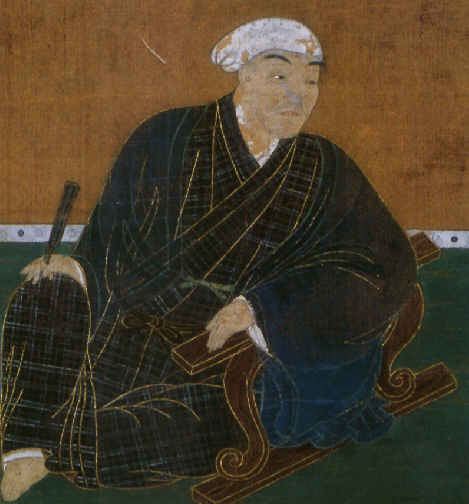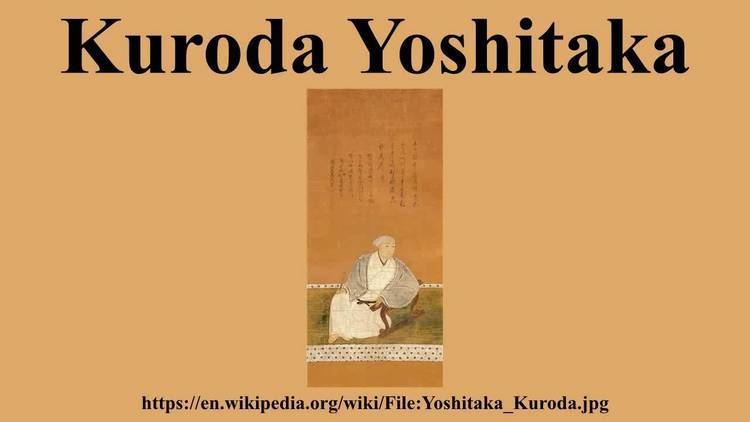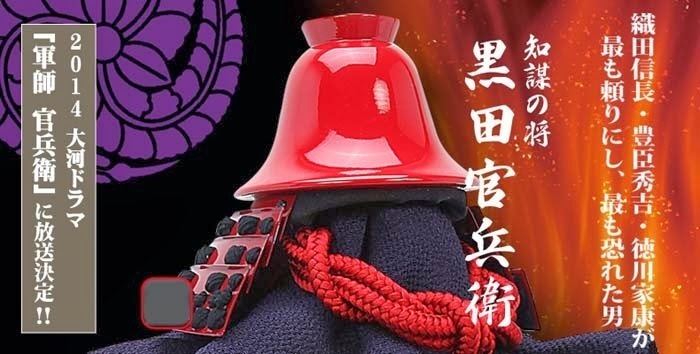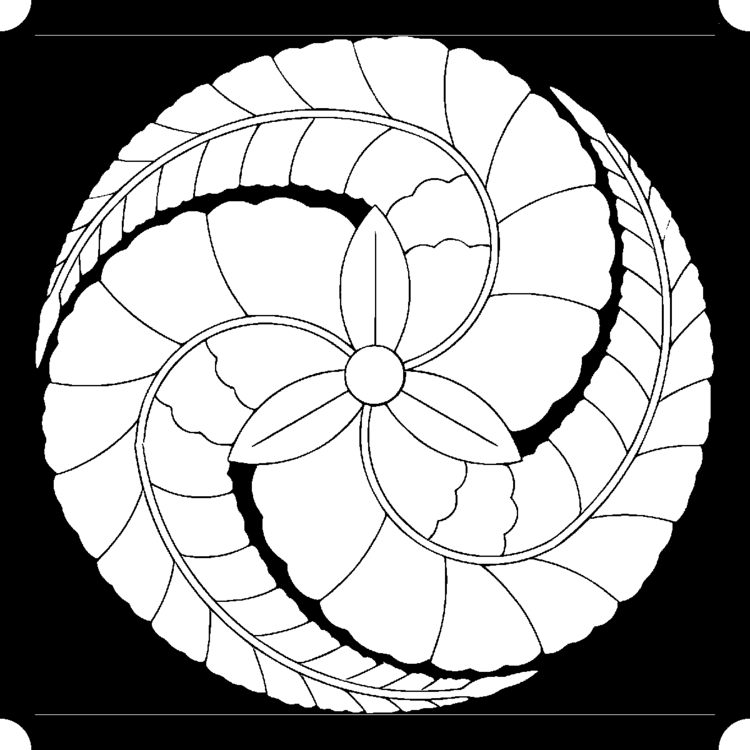Name Kuroda Yoshitaka Children Kuroda Nagamasa Parents Kuroda Mototaka | Spouse Teruhime (m. 1567–1604) Role Daimyo | |
 | ||
Died April 19, 1604, Fushimi-ku, Kyoto, Kyoto Prefecture, Japan Grandchildren Kuroda Tadayuki, Kuroda Nagaoki, Kuroda Takamasa Similar People | ||
basara4 sengoku basara 4 sumeragi oda nobunaga kuroda kanbee routes live stream
Kuroda Yoshitaka (黒田 孝高, December 22, 1546 – April 19, 1604), also known as Kuroda Kanbei (黒田 官兵衛, Kuroda Kanbee), was a Japanese daimyō of the late Sengoku through early Edo periods. Renowned as a man of great ambition, he was a chief strategist and adviser to Toyotomi Hideyoshi. Kuroda became a Christian when he was 38, and received "Simeon Josui" as a baptismal name (rekishijin). His quick wit, bravery, and loyalty were respected by his warriors.
Contents
- basara4 sengoku basara 4 sumeragi oda nobunaga kuroda kanbee routes live stream
- origin of the kurosaki matsuzaka tori strategist kanbee kuroda nagamasa
- Early life
- Maturity and career
- Imprisonment
- Continued Service under Hideyoshi
- Human Relations
- Personality
- Later life
- References

origin of the kurosaki matsuzaka tori strategist kanbee kuroda nagamasa
Early life
Kuroda Yoshitaka was born in Himeji on December 22, 1546, the son of Kuroda Mototaka. The Kuroda clan are believed to have originated in Ōmi Province. Yoshitaka's grandfather Shigetaka brought the family to Himeji and took up residence at Gochaku Castle (御着城), east of Himeji Castle.

Shigetaka served as a senior retainer of Kodera Masamoto, the lord of Himeji, and was so highly praised that Shigetaka's son Mototaka was allowed to marry Masamoto's adopted daughter and to use the Kodera name. When his father, Mototaka died, Kuroda became the head of the Kuroda family at the age of 21.
Maturity and career

Yoshitaka succeeded to the family headship in 1567, the same year that he participated in the Siege of Inabayama Castle, when Oda Nobunaga defeated the Saitō clan of Mino Province. A few years later, with Toyotomi Hideyoshi spearheading the Oda clan's advance into the Chūgoku region, he pledged loyalty to the Oda. Yoshitaka, together with the sickly Takenaka Hanbei, served as Hideyoshi's strategists and assisted in the campaign against the Mōri clan.
Imprisonment

In 1577, Arioka/Itami Castle's lord, Murashige Araki, concluded an alliance with the Mouri to revolt against the Oda clan. An ally, Masamoto Kodera, also framed a plot to cooperate with Araki. Then, Kuroda went to Arioka castle to prevail on Araki not to become a defector against the Oda in 1578 Araki chose to imprison Yoshitaka instead. Araki's revolt eventually concluded in the Siege of Itami (1579), culminating in Yoshitaka's rescue. Due to his long imprisonment (with lack of space for sleeping and sitting), Yoshitaka suffered a leg disorder and lost his eyesight in one eye for the rest of his life.
Continued Service under Hideyoshi

Shortly before 1587, Yoshitaka was ordered by Hideyoshi to lead an attack into Kyushu. Along with him was the Christian daimyō Takayama Ukon. After seeing the thriving Christian population of Kyushu, under Ukon's influence, Yoshitaka was baptized with the name ドン・シメオン (Dom Simeão = Don Simeon). After a visit to the Jesuit-controlled port of Nagasaki, Hideyoshi became fearful of the powerful influence that Jesuits and the Christian daimyōs wielded and in 1587 made his famous edict that expelled foreign missionaries and ordered all the Christian samurai under his rule to abandon their faith. While Ukon resisted the edict and lost his status, Yoshitaka gave up his new religion and adopted a monk's habit, calling himself Josui (如水). Like Naitō Joan (who took his name from Portuguese João), it is believed that Yoshitaka chose his new name from "Josué", the Portuguese version of "Joshua". His most prominent act during his short time as a Christian was his arrangement to save a Jesuit mission from Bungo when the Christian daimyō of that province, Ōtomo Sōrin, was under attack from the Shimazu clan.
Human Relations

As depicted in historical writings and contemporary television, it is suggested that Kuroda was simultaneously feared by Hideyoshi, despite his attempts to under-estimate his intelligence and influence. It is alleged that Hideyoshi's fear is due to his overwhelming debt to Yoshitaka, having helped him reign over the whole country as his shadow strategist--with Hideyoshi even believing that the Kuroda might overthrow him eventually. In addition, Kuroda deepened a friendship with Sen no Rikyū, known as the founder of the Japanese tea ceremony "wabi-cha"--and who was later put to death by Hideyoshi himself out of intrigue.
Personality
Kuroda was a frugal person, and he sold used military equipment and personal belongings to his vassals. He saved enough money to pay mercenaries in the Sekigahara War due to his thrifty mind. His last words were, "Do not try to gain other people's favor and do not wish for wealth." He was also involved in the project to build principal castles: Himeji castle, Nagoya castle, Osaka castle, and Hiroshima castle under the reign of the Toyotomis.
Later life
Yoshitaka made an attempt to conquer the region of Kyūshū during the Battle of Sekigahara, but this ended up in failure even though he was able to momentarily gain the control of over seven provinces in Kyūshū due to Tokugawa Ieyasu's victory in the Battle of Sekigahara and his enter in Osaka. After moving to Chikuzen Province (筑前国 Chikuzen no kuni) which today is part of Fukuoka Prefecture, the Kuroda built a new castle near Hakata-ku (博多区), and named it Fukuoka Castle (福岡城, Fukuoka-jō) also known as Maizuru Castle (舞鶴城 Maizuru-jō) or Seki Castle (石城 Seki-jō) which was completed in the early Edo period for tozama daimyō Kuroda Nagamasa. After his son Nagamasa succeeded him, Yoshitaka died on April 19, 1604. His grave is in the Namazuta area of Iizuka, Fukuoka, near the original site of Namazuta Castle.
